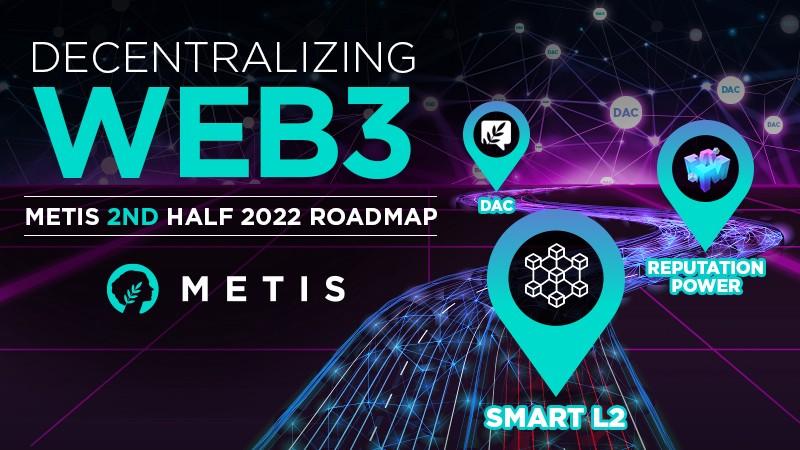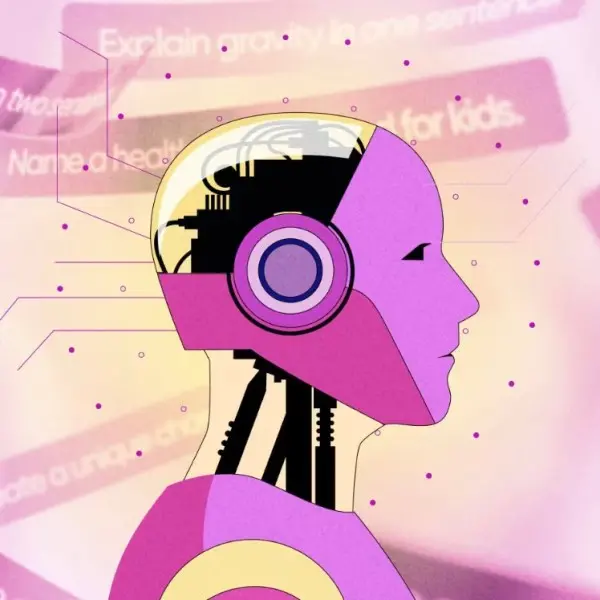A Casual Talk on the Metaverse: How Do Web3 and DAC Play a Role?
Original Title: “Web3++: Metaverse, DACs, and Metis”
Author: Alfonso de la Rocha, Researcher at Protocol Labs
Compiled by: Creed, Chain Catcher
"What’s the big deal about the 'Metaverse'? But it made Facebook change its name to 'Meta' and made that name its future goal, so the 'Metaverse' does have some substance."
In the past few weeks, mainstream media have been eager to report on what the "Metaverse" is, what aspects it could potentially impact, and what it means for the internet, among other things. However, reading these mainstream outputs may lead you to believe that the Metaverse is just an additional dimension for traditional social media. For example, it might make your interactions with friends richer, allow you to play Fortnite in an immersive new way, or serve as a new way to watch movies and shop online. In reality, the Metaverse is an all-encompassing integration. For me, the Metaverse is a new front end of the internet.
"The Metaverse is a promising technology that will not only fundamentally change the infrastructure layer of the digital world but also transform much of the physical world, along with all the services and platforms on top of them, how they operate, and what they offer." ---Matthewball.vc
What is the Metaverse?
When I am asked this question, I sometimes find it really hard to explain what the Metaverse is clearly. One reason is that the complete vision of the Metaverse is still difficult to define, seems dreamy, and appears to be decades away from us. However, from VR to decentralized identity and DAOs, these products have started to make people feel that it is becoming increasingly real. What I want you to understand from this article is that the Metaverse is not just what Facebook wants to build, like you and your friends playing and chatting in a 3D hidden garden, but rather an open digital world created collaboratively, offering you infinite experiences.
Some key features about the Metaverse that most people agree on include:
- It will be persistent. The Metaverse will never be "reset," "paused," or "ended"; it will continue indefinitely, just like the internet (or even blockchain networks;). This is one of the reasons why it is not just "immersive Fortnite." Websites in the internet are dynamic, and they may have changed by the time you visit them again. The same goes for different worlds in the Metaverse. They are also dynamic and may evolve while you are not present or unaware.
- It will be synchronous and real-time. Pre-scheduled and self-contained events will occur in the Metaverse, just as they do in "real life," but the core will be real-time shared experiences among users in the same area of the Metaverse.
- It will not be limited by the number of users "existing" simultaneously in the Metaverse and will provide each user with a separate sense of "existence." This will inevitably bring a series of potential and interesting technical challenges. How can we build an infrastructure whose quality of service is unaffected by the number of users? Or, on a more philosophical level, how will we establish models of space, time, or physical laws in this new universe?
- It will be a fully functional economy on top of the real economy. Individuals and businesses will be able to create, own, invest, buy, sell, and "work" in the Metaverse to generate "value" and receive rewards and recognition. We might even let you "paid to play" in the Metaverse (if some people really need it). When talking about the digital economy, we must mention blockchain, cryptocurrencies, and DAOs. I will leave this topic for discussion below, but web3 technology is precisely the core to realizing the Metaverse.
- Are "in-universe" and "out-of-universe" two different experiences? Probably not. Given the current level of technology, you might think of the Metaverse as this universe in VR, but the Metaverse will also span both physical and digital worlds through AR (augmented reality). Some worlds in the Metaverse may be tied to physical locations and can only be accessed when you are in a certain place. These are experiences that anyone can build in the Metaverse. Therefore, the Metaverse is a platform where creators will be able to build (and own) these digital experiences, just as the internet became a platform for disseminating 2D content. Have you ever dreamed of a world where everyone can fly? Well, that might be closer than you think.
- It will provide unprecedented interoperability: Currently, digital assets are scattered across islands on the internet. Even our data is isolated within the information systems of all the companies we interact with. Your favorite song might only be recorded on Spotify, and the collectibles you unlock in League of Legends are not available for use in Fortnite. Essentially, in the current internet, the utilization of the digital world is like a shopping mall where each store uses its own currency. The Metaverse will bring all these worlds and experiences under the same set of protocols, just as IP provides a basic protocol layer for interoperability among heterogeneous connected devices.
- It will have decentralized characteristics. Anyone will be able to access and interact with the Metaverse, regardless of their location, internet provider, or the device they are using.
- Finally, it will be filled with "content" and "experiences" created and operated by various contributors (from individuals to large organizations). This is why what Facebook is building may not be the key to the Metaverse. Is the web owned by a single entity? Not at all. Anyone can freely publish their own services or applications. The same goes for the Metaverse. Anyone can freely create their own worlds, experiences, content, or secondary economies. Here, DAOs may play a key role in coordinating ownership and interaction among members within the same world or community. When you create your own world in the Metaverse, you will be able to deploy your own DAO to coordinate the economy of the world and manage its evolution. There is no need for any centralized governance entity to ensure the long-term operation of the world; DAOs will empower community members to implement rules to govern the world.
If you want to think about the Metaverse in a simpler way, you can imagine it as Night in the Woods, starting from a single point or a world made up of people you know, where you can engage in any experience or activity and potentially meet almost all your needs. That’s why hypertext is such a key example. But it’s important to recognize that the Metaverse is not a game, a piece of hardware, or an online experience. It’s like saying that World of Warcraft, the iPhone, or Google is the internet. They are digital worlds, devices, services, websites, etc. The internet is a broad set of protocols, technologies, pipelines, and languages, along with access devices and content, and the communication experiences on top of them. The Metaverse will be the same.
The Role of Web3
In the description above, you have seen some buzzwords that have emerged in Web3, such as "decentralization," "digital economy," "decentralized autonomous organizations," or "interoperability." Another question I constantly ask myself (and others) when thinking about the Metaverse is, "What is the role of Web3 in the Metaverse?" As before, mainstream media do not have convincing answers, but fortunately, some knowledgeable people have been able to provide me with insights on this issue.
Building an infrastructure that can support the promises of the Metaverse is technically challenging. However, some modules currently being built for Web3 can genuinely alleviate the challenges of constructing an open Metaverse:
- A decentralized identity. The Metaverse is a never-ending continuum that any individual can freely enter. If we want this universe to have interoperability, we cannot accept having different identities based on the world you enter (as is the case with the current internet). Your identity may have different characteristics depending on the world, but your core identity should not be altered. Additionally, to ensure that digital assets are interoperable across the entire Metaverse, they should be linked to your own identity, meaning they should be unique.
- Decentralized storage. To make the Metaverse interoperable, open, and unaffected by downtime or system load, it needs to rely on decentralized infrastructure. All content, worlds, and digital assets in the Metaverse need to be hosted somewhere, and I don’t think AWS S3 (Amazon Simple Storage Service) will be the preferred choice for that. Once the Metaverse starts to become a reality, decentralized storage platforms like Filecoin or IPFS will surely thrive, as the storage demands of devices will rise to a level of necessity.
- Cryptocurrencies and NFTs are at the core of the Metaverse's digital economy. At this point, we cannot imagine a digital economy without cryptocurrencies and NFTs. These digital assets have attracted significant funding and paved the way for new financial markets like DeFi and NFTs. Imagine what achievements they could accomplish once they become part of a new digital universe's economy.
All the Web3 modules mentioned above share a commonality: a blockchain network that coordinates all these interactions. Every monetary transaction in the Metaverse, every ownership transfer, and even the minting of new digital assets could potentially be operated and recorded on the blockchain. The same situation will occur with identity-related operations.
However, in its current state, blockchain is not suitable for supporting the Metaverse: its performance is insufficient (a throughput of a thousand transactions per second seems inadequate for the Metaverse); economies of scale have not yet reduced transaction costs to a level that users can afford (if the Metaverse were to be built on Ethereum, perhaps only the wealthy could afford it); and we lack interoperability (we should not expect a single blockchain network to power the Metaverse, but rather many blockchain networks working together).
This is why the progress made by projects in the blockchain space is important not only for the blockchain market but also potentially influential in the Metaverse. The Metis project, exploring Layer 2 and leveraging Ethereum's trust to minimize gas costs, could be a good entry point for integrating the Metaverse with blockchain. Or advancements around sharding and interoperability could enable different worlds, assets, and identities to be hosted on different blockchain networks while achieving smooth interactions between them.
As I mentioned in this article, improvements to prevent digital assets from fragmenting across different blockchain networks will ultimately become a priority for supporting the Metaverse's blockchain networks.
Metaverse, DAO, and DAC
In many of my articles, I have introduced the concepts of Decentralized Autonomous Organizations (DAOs) and Decentralized Autonomous Companies (DACs). They are both key modules for the future of Web 3.0. The Metaverse is both a technological revolution and a social revolution, and DAOs, as the operating system of communities, will be key to the Metaverse. DAOs provide a technical layer to enable global and decentralized collaboration among individuals without the need for third-party trust or a few representatives (as is the case now with organizational structures or representative democracies).
DAOs are a set of smart contracts that help coordinate decision-making among individuals in a community. Therefore, whenever a community formed in the Metaverse needs to handle a set of digital assets or even interactions related to voting and governance, it should be a straightforward process to fund a nation in the Metaverse and reward individual actions within that world through a DAO.
However, DAOs may not be entirely suitable for the Metaverse and may lack some important functions to support the digital economy of communities within the Metaverse. This is why the Metis project is exploring the evolution of DAOs into DACs. What improvements do DACs have compared to DAOs, and how do they fit into the Metaverse? Beyond simple coordination of voting and governance, DACs are more scalable and can horizontally expand as organizations grow; DACs will be able to grow or be subdivided as organizations change. DACs can also define access permissions and roles for different participants, enabling richer interactions and use cases. They also include capabilities for executing human resources, payroll, corporate governance, etc., in a decentralized manner, meaning they encompass everything you need to launch your own decentralized enterprise. But what does this mean in the Metaverse?
- Roles and Reputation. In "traditional" DAOs, every member has the same role, with no way to set special permissions or "power" for different participants. DACs support this by allowing businesses in the Metaverse to implement DAC-like operations, customizing different roles based on your status in the enterprise, so you can influence the business in different ways. This connects to another great feature of DACs, which is an embedded reputation system that allows other DAC members to assess the contributions of other members within the ecosystem.
- Scalability. As mentioned above, organizations in the Metaverse should have millions of transactions daily, and the system should not be affected by the number of concurrent users, meaning interactions in the Metaverse and the DACs deployed within it should be able to scale seamlessly.
- Finally, no one will know how human resources, payroll, or corporate governance will operate in a digital universe where users can come and go freely, and you cannot rely on a single "corporate governance entity" to always be available and connected to the system. The outputs of DACs in terms of payroll, human resources, and management will provide the foundational capabilities and will influence how human resources, payroll, and organizations will be designed in the Metaverse.
What are the Use Cases?
At first, I really struggled to think of other use cases for the Metaverse beyond gaming and virtual spaces. Later, a good colleague of mine told me, "Think of the Metaverse as adding an extra dimension to the internet." Since then, when I consider the potential impacts and use cases of the Metaverse, I try to add an extra dimension to existing use cases on the web.
Try to imagine what it would be like if you could shop online in 3D and have an immersive experience. Or imagine how cool it would be if there were "Quidditch courts" available for anyone to use throughout the Metaverse. You could play Quidditch with your friends just like you play basketball at the court next to your house every Saturday. And let’s say you need a good pair of shoes to play basketball every weekend, and you also need a brand new Nimbus 2000 broomstick to participate in Saturday's Quidditch match. A broomstick you need to pay for, which could be a real NFT (with ownership belonging to you).
But the Metaverse is not just for fun. Think about the possibilities it brings to work. What would happen if you added a third dimension to Google Drive or Zoom? No longer would it be "I wish I had a whiteboard to show you my ideas." You and your colleagues could share a whiteboard in the same space and brainstorm as if you were in the same room.
If I had to summarize the Metaverse in one sentence, it would be: "The 3D version of the web front end." Will we reach this goal? We will have to wait and see, but it is clear that many of the Web3 modules needed to build the promises of the Metaverse will remain and evolve.









